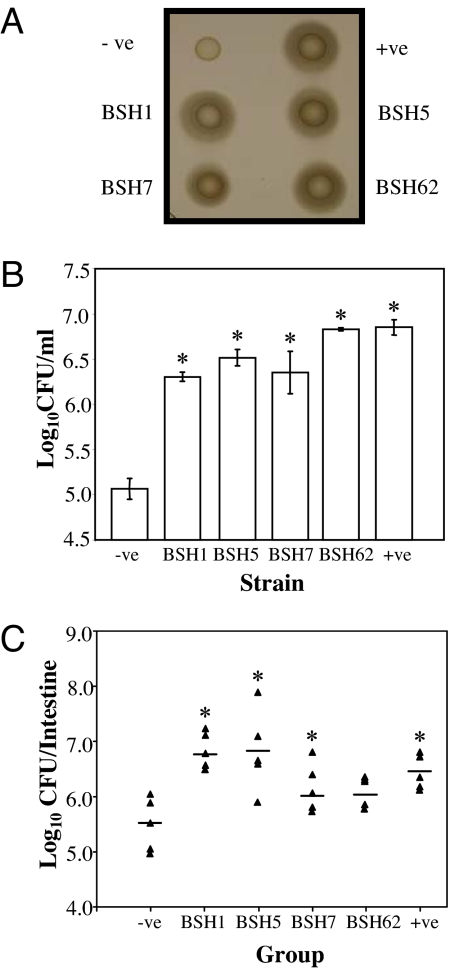Fig. 3.
Elucidation of BSH function in the human gut microbiota. bsh genes from functional metagenomic clones FM1, FM5, FM7, and FM62 (Table S2), corresponding to BSH types A, D, E, F, respectively (Table S3) were cloned in L. innocua FH2333 by using plasmid pNZ44. The resulting clones were designated BSH1, BSH5, BSH7, and BSH62, respectively. Empty plasmid and plasmid-containing bsh from Lactobacillus plantarum were used as negative (−ve) and positive (+ve) controls, respectively. (A) Confirmation of expression of cloned BSH. An agar plate assay (22, 33) was used to examine the bile hydrolase activity of strains. Cultures that were grown in brain heart infusion (BHI) broth were spotted (10 μl) onto LB bile agar supplemented with 0.5% bile acids. Strains with bile salt hydrolase activity were surrounded with white precipitate halos of deconjugated bile acids. (B) Bile survival assays. Overnight cultures were inoculated (3%) into broth supplemented with 25% (wt/vol) bovine bile (Oxgall, B3883 Sigma). Viable cell counts were performed after 3 h by diluting cultures in one-quarter-strength Ringer's solution and enumeration on BHI. Statistical differences from the negative control were determined by Student's t test. *, P < 0.01. (C) Murine experiments. Spontaneous rifampicin-resistant mutants of strains were isolated as described (15). For each strain, five BALB/c mice were administered with ≈109 cells by oral gavage on two consecutive days. On the third day the small and large intestines were removed and homogenized in PBS and bacterial numbers were determined by spread plating homogenized organs BHI on agar supplemented with 50 μg/ml rifampicin. Horizontal bars indicate the mean. Statistical differences were determined by Student's t test. *, P < 0.05

